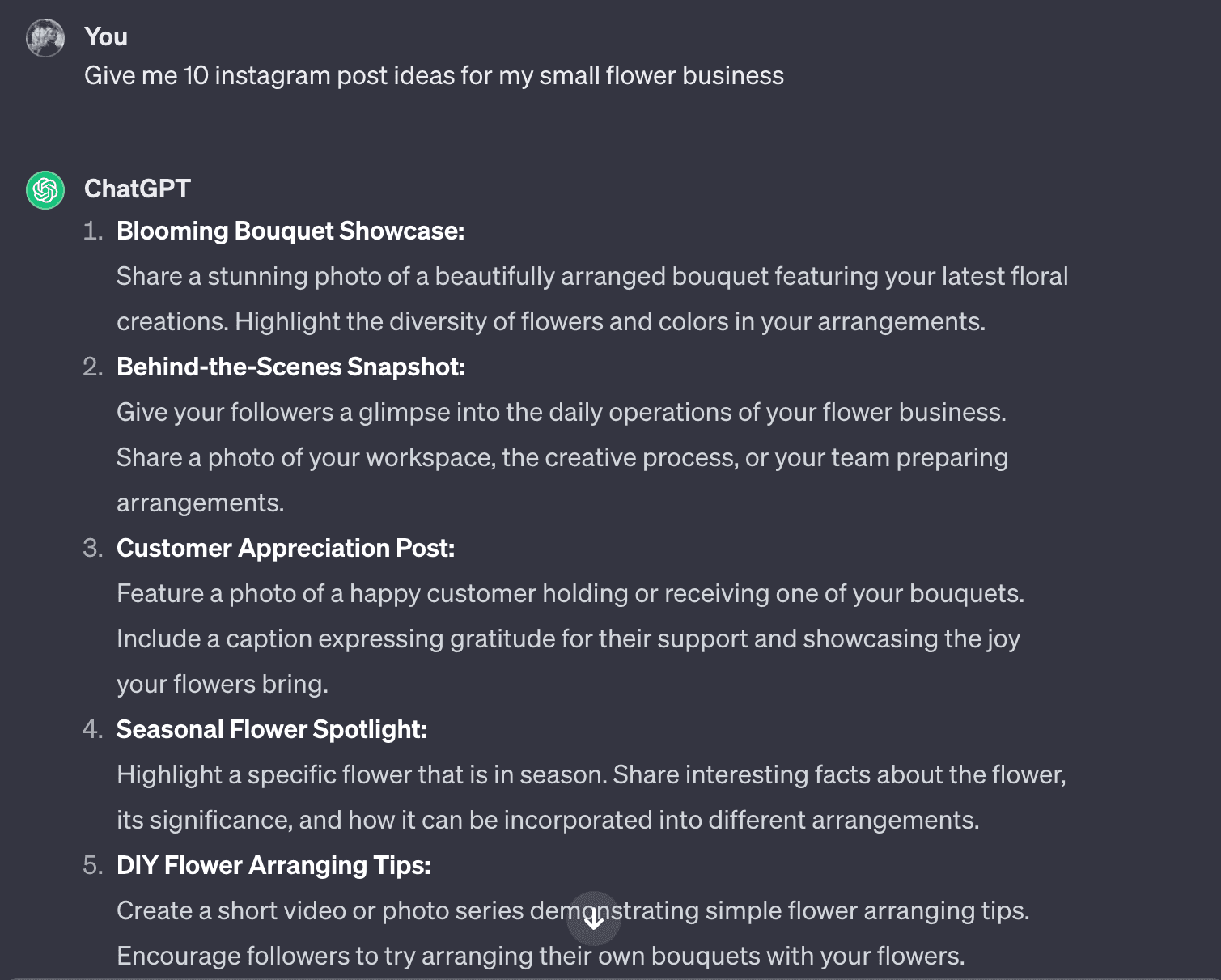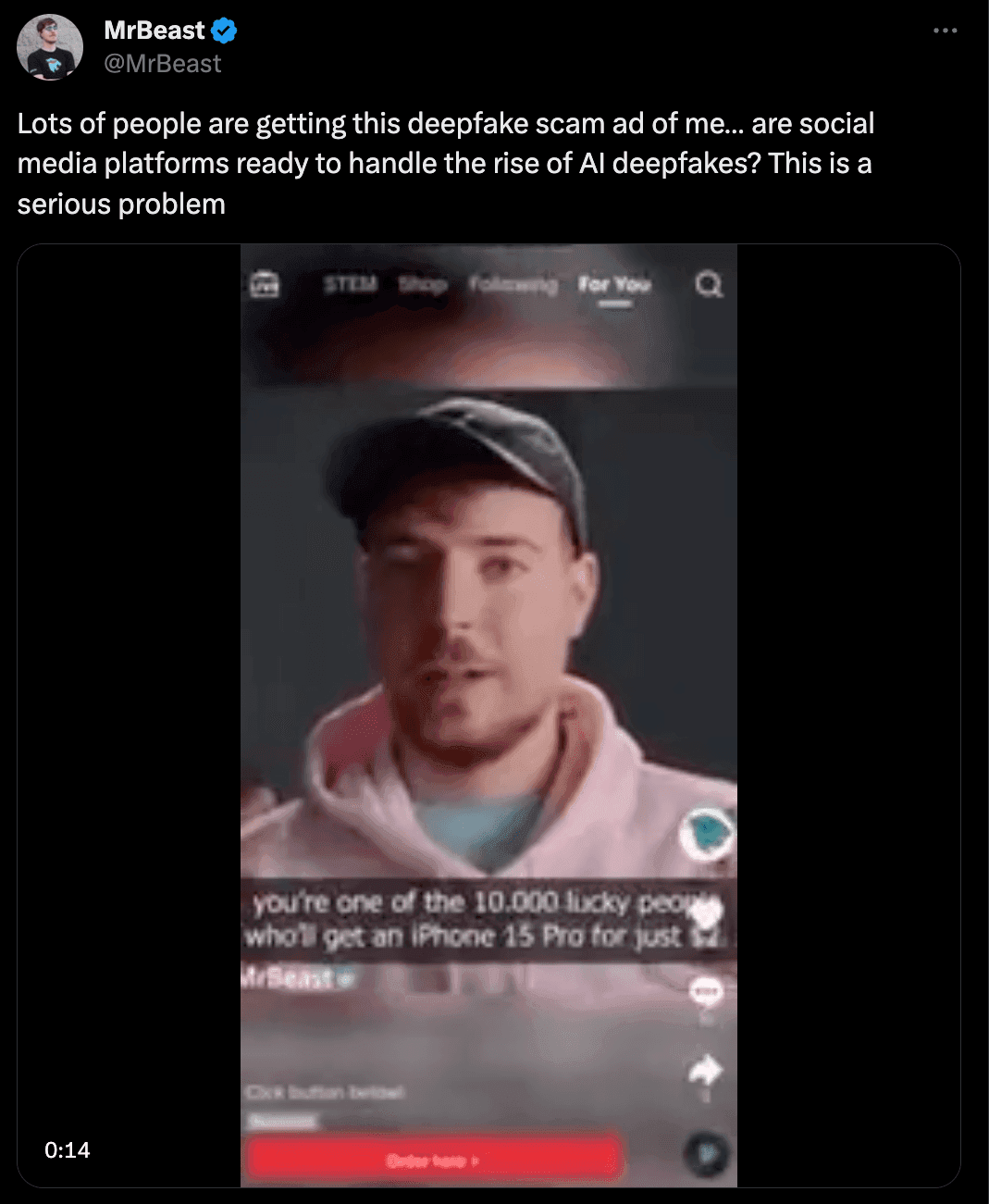AI Is Changing How We Market
The rise of artificial intelligence (AI) and AI-powered marketing tools in 2023 has significantly affected how marketers work and the results of their work.
Similar to the general adoption of websites for marketing in the 1990s and social media in the early 2000s, the face of marketing is about to change again.
Like with most new technology, some instantly embrace it. These are the early adopters, a term popularized by Everett Rogers in his book Diffusion of Innovations.
While others, the late majority, are skeptical and afraid it’ll steal their jobs.
Whatever you think, one thing is sure — AI is here to stay. And as a marketer who wants to keep generating results, it’s crucial to monitor AI marketing trends to stay ahead of the curve.
Before we get into some of the marketing trends you can expect to be on the rise in 2024, here’s a brief refresher on AI’s current role in marketing.
Introduction To AI In Marketing
AI marketing is a term used to describe using artificial intelligence (like algorithms and automation) to handle day-to-day marketing processes.
It involves all the responsibilities and tasks you’ll typically carry out in marketing, except this time, with the help of AI.
Marketers today use AI marketing tools to create new content, automate repetitive tasks, make data-driven decisions, develop an entire content marketing strategy, and so much more.
Current State Of AI In Marketing
Although still in its early days, the use cases for AI in marketing are on a steady rise. Many marketers today are using AI to:
Generate New Content
According to this McKinsey survey, 60% of organizations use some form of generative AI tool. These AI tools help marketers to generate or create new content. Initially, most of these tools could only generate written content, but now some can create videos, images, and other forms of media.
For an AI tool to generate content, a marketer must provide a prompt or context regarding what they want it to generate.
Using AI to generate marketing content helps you save time and effort and boosts your creativity.
However, these AI content generators often lack originality. As such, all their content reads or looks the same.
Analyze Data From Marketing Campaigns
Data informs the decisions you make as a marketer. It is information analyzed or extracted from data that’ll help you know how to improve your marketing campaigns.
With more data produced today than ever — 328.77 million terabytes daily — marketers need all the help they can get. Fortunately, AI comes in handy.
AI tools like Outranking.io, MarketMuse, and Browse AI all offer the means to extract, track, and analyze customer and audience data so that you can make better marketing decisions.
The drawback to using AI for data analysis arises from the limited human involvement and the ethical concerns about data privacy and transparency.
Personalize Marketing Messages & Campaigns
Consumers in today’s market are spoilt for choice. Given their many options, your marketing messages must be relevant, or they’ll turn elsewhere. That is why personalization matters.
Your ads and content must meet your prospects at their stage in their buyer’s journey. And AI can help you get there.
Using AI, you can analyze your audience data and grasp their specific pain points and needs. That way, you can serve personalized messages that increase the chance they’ll convert.
However, it’s not so easy to use AI to create personalized messages. You’d need to train the AI model on accurate and high-quality data — which isn’t always easy to find.
Social Media & Influencer Marketing Trends
The global influencer market is expected to reach $22.2 billion by 2024. And social media ad spend is estimated to reach $262 billion in 2028. Indeed, AI has an increasing part to play in these huge industries.
Here’s what you can expect with the use of AI in the social media and influencer marketing space in the coming years.
Trend #1: Rise In The Creator Economy
The growth of generative AI tools reduces the creation barrier. How? With simple but well-thought prompts, everyday people can generate scripts and ideas they can use to form content.
For instance, here’s Chat GPT’s return of a simple request for Instagram post ideas.
You can expect more people to continue or start using these AI tools to fill in the blanks in their social media marketing strategy.
Trend #2: Increase In Virtual Or Branded Influencers
Whether you think we’re living in an episode of Netflix’s blockbuster series, Black Mirror or not, the virtual influencers Meta created sure raised many eyebrows.
These “influencers” had the likeness of celebrities people already know and love.
For example, here’s Billie, who is essentially a Kendall Jenner clone.
Snapchat also has its version of AI. In its case, the AI chats with users like an actual human — answering questions, offering advice, etc.
As more data is collected and the AI models are trained better, you can expect that more brands will create their own AI personas that interact with their audience.
Future Trends In AI Marketing
Let’s consider other trends marketers should look out for.
Trend #3: Increasing Productivity
Tools make a task more streamlined. With the right tools, you’d spend less time and effort on an assignment.
You can expect this in 2024 with the rise of AI tools. Today, these AI tools handle things like social media, content marketing, data analysis, video, paid media, etc, which will improve how marketers work.
The freed-up time from using these tools can be used on other responsibilities that AI cannot handle — yet.
Trend #4: More Accurate Predictive Analysis
With each new AI model getting more intelligent, you can expect AI to collect and analyze more data points across a customer’s journey.
With more data collected, predictive AI could analyze a customer’s current shopping habits and thus predict future behavior.
Retailers and eCommerce business owners would find it valuable as they can use such predictive AI to make better decisions about inventory.
Trend #5: More Attention To SEO Search Queries
Half (50%) of US-based customers use voice search daily. That percentage will steadily rise as more people use different versions of AI-powered virtual assistants like Alexa, Siri, and Google Assistant.
What does this mean for you? It means that for people to find your content, it needs to satisfy their primarily informational search intent. This would require that you provide the answers fast without fluff.
It also means that you pay attention to how everyday people would the questions you want to answer with your content. You could create a frequently asked questions (FAQs) section for specific search queries.
You should also use conversational keywords and search terms in your content so it flows naturally.
Challenges & Ethical Considerations For AI In Marketing
Although AI has many advantages, it has some drawbacks too. Here are two of them:
Privacy Issues
AI relies on a lot of data — often customer data. As such, it’s only reasonable that people are concerned about how much data about them AI collects.
As a marketer using AI tools, ensuring that your tool’s data collection process follows the approved industry standard for collection, usage, security, and privacy is crucial.
Ethical Considerations
An AI tool or model is only as good as the data used to train it. If the data is biased or unfair, the AI will behave similarly.
As such, marketers must use models that have proven to be unbiased.
There is also the concern about using deepfakes to promote products and manipulate people. Because of how realistic these videos or images are, they can easily be used to spread misinformation or manipulate people.
For example, in this tweet, popular YouTuber MrBeast had to make a disclaimer concerning an ad that featured a deepfaked version of himself.




